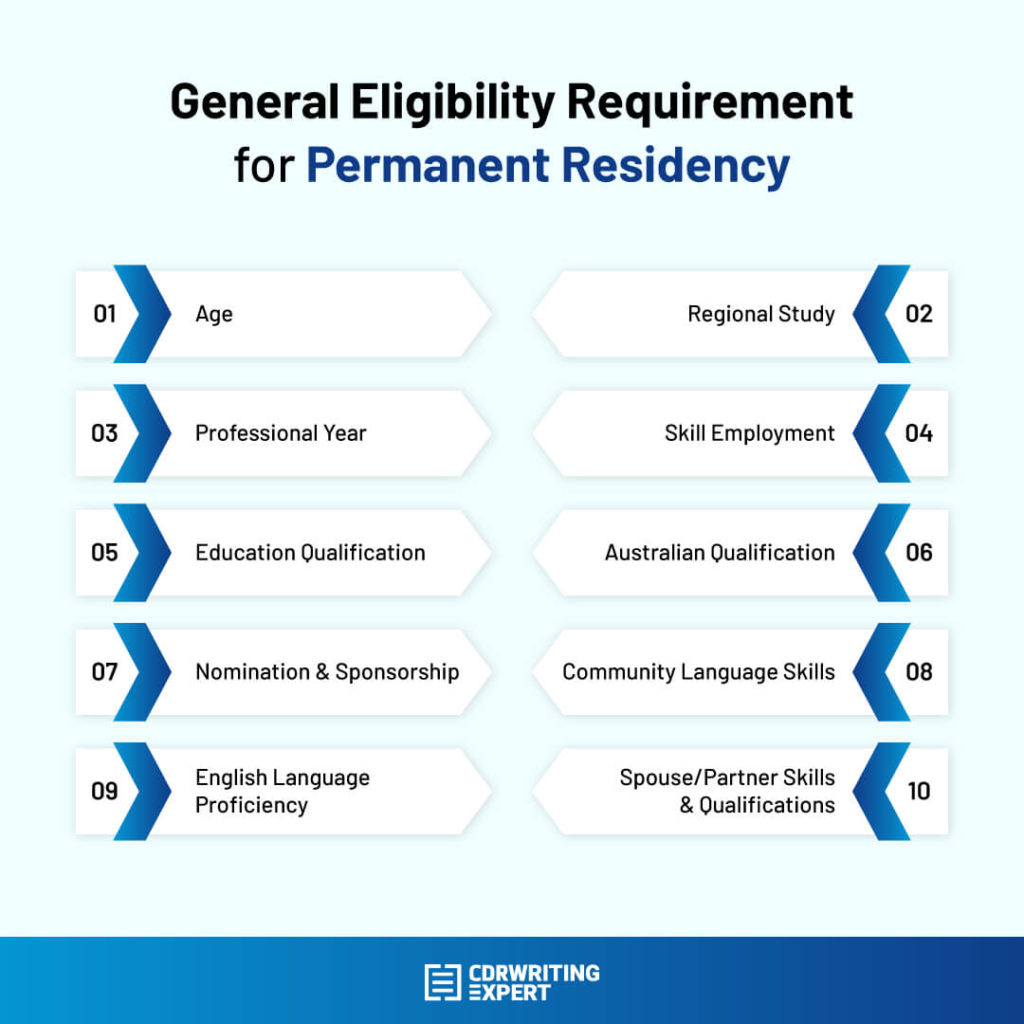
Australia has been a popular destination for anyone looking to relocate to another country. The country has positive aspects, such as a booming economy, which means greater work prospects. Australia promises a higher standard of living as well as a multicultural community that is peaceful and harmonious.
Immigrants can apply for a permanent residency visa in Australia, and the visa has a five-year validity period. With a PR visa, you and your family can move to Australia. After three years in Australia on a PR visa, you can seek citizenship.
Table of Contents
Benefits of having a PR Visa
- You have the freedom to live and go wherever you wish in Australia.
- You can pursue higher education in Australia and apply for educational loans.
- You are eligible for Social Security benefits after two years on a PR visa.
- You can assist your family with their PR if they match certain criteria.
- You can apply for government jobs.
- You are welcome to visit and apply for a visa in New Zealand.
General Eligibility Requirement for Permanent Residency
There are several categories in which you can apply for a P visa, each with its own set of requirements. However, the following are the typical eligibility criteria:
Points Requirements for Permanent Residency

Your point total determines your eligibility for a PR visa. Under the Point’s Grid, you must score at least 65 points. The following table outlines the various score criteria:
Depending on their skill sets, educational credentials, and job experience, any business people and skilled professionals can migrate to Australia. With general skilled migration, a positive Skill Assessment test score will be used to assess your eligibility for Australian Immigration.
If you are under 50 years old, speak English well, and have sufficient work experience in a comparable field on the Skilled Occupation List(SOL), you can get a good score.
1. Age
Points are different for the different age groups. The age group, 25-32, will receive the highest points 30, 18-24 & 33-39 will get 25 points, 40-44 years will get 15 points, and 45-49 will not get any points.
2. English Language Proficiency
Applicants will receive points based on their speaking, listening, reading, and writing abilities. You gain 20 points for superior language skills (scores of eight or higher), ten points for proficient language abilities (scores of seven or higher), and zero points for competent language skills (scores of six or higher). It would be advantageous if you took the IELTS, PTE, or other internationally recognized language tests.
3. Skilled Employment
Skilled employers in Australia with 8 to 10 years of experience from the date of application will receive 20 points. For 15 points, applicants from foreign countries must have 8 to 10 years of work experience. Work experience of 1, 3, 5, or 8 years will get you 5, 10, 15, or 20 points. Applicants from outside Australia with 3,5,8 years of work experience, on the other hand, will receive 5, 10, 15 points, respectively.
4. Educational Qualification
The state or territory must nominate the candidates’ qualifications. In addition, their credentials must fulfill Australian Standards. Those with a bachelor’s degree and a postgraduate degree, for example, will be awarded points for their postgraduate qualification. Doctorate, Bachelor’s Master’s Degree, Australian Diploma or Trade Qualification, Award, or qualified recognized by the evaluating body in assessing the skilled vocation will contribute 20, 15, 10, and 10 points.
5. Australian Qualifications
In the Australian Immigration points calculator, educational qualification plays a significant role. Anyone who has studied in Australia for at least two years will receive 5 points.
Any degree, certificate, or trade qualification acquired in Australia will be awarded 5 points after two years of study.
6. Regional Study
Candidates who completed a diploma or degree in Australia are eligible to apply (minimum two years). They were forced to settle in rural Australia, and residents of regional Australia or low-population regions will receive an additional 5 points. This takes you closer to realizing your goal of moving to Australia.
Any degree, certificate, or trade qualification earned in Australia following two years of study in a regional or low-population area is worth 5 points.
7. Community Language Skills
The National Accreditation Authority for Translators and Interpreters in Australia must be provided (NAATI). To be eligible for 5 points, you must achieve a minimum score, and the NAATI-recognized translator’s language skills would be worth 5 points.
8. Spouse/Partner Skills and Qualifications
Candidates who have included their spouse or partner in their visa application may receive bonus points based on their spouse’s or partner’s abilities and credentials. If the applicant’s spouse or partner lives outside of Australia, they must fulfill the age, specified occupation, and English Competency Requirements. The Spouse or Partners will receive 5 points if they satisfy the minimum standards.
9. Professional Year
A professional year is a program that combines on-the-job training with formal education to provide professional growth. It assists you in obtaining Australian PR. Extra points are available if the candidate has completed a four-year professional year in Australia. You will receive an additional 5 points if you have completed a 4-year professional year in Australia.
10. Nomination and Sponsorship
According to the Australian Visa Points Calculator, nominations can receive extra points if an Australian territory or state government sponsors the applicant. This criterion, however, does not apply to skilled regional visas or skilled nominated visas.
You may need to get 90 points for the PR based on the present circumstances and the economic crisis caused by COVID-19. Health workers, such as nurses and physicians, are granted 189 and 190 visas based on their research profile in the medical area.
Visa under General Skilled Migration
You must submit an Expression of Interest (EOI) via SkillSelect, depending on the visa category. Then you can apply for a qualifying visa through the nomination of an Australian state or territory. To apply for this type of visa, you must meet specific criteria set forth by Australian Immigration. The majority of point calculations are done for:
1. Skilled Independent (Subclass 189) Visa
For a skilled-independent visa, you don’t need a sponsor. Rather, you can apply based on your point-based system. If your nominated occupation list is in MLTSSL’S occupation list, you can submit an expression of interest (EOI) and be invited to apply for the visa.
2. Skilled Nominated (Subclass 190) Visa
With a Skilled Nomination visa, you can live, study, and work in Australia permanently. For this, you need to have a nominated occupation list from State or Territory then you can submit an Expression of Interest(EOI).
3. Skilled Work Regional (Subclass 491) Visa
Skilled Work Regional Visa is also called Provisional Visa. It allows eligible professionals and their family members to live, study, and work in the preferred regional areas of Australia for five years. The visa lasts for five years. However, you will be eligible for permanent residence after three years with the fulfillment of all documents along with the Competency Demonstration Report(CDR).
4. Australian investor Visa (Subclass 891)
The Australian Investor visa or the Subclass 891 visa for immigrants who wish to invest and build a company in Australia with this visa may stay in the country indefinitely.
And other relevant visa categories are:
- Skilled Regional (489) Visa
- Graduate Temporary(Subclass 485) Visa
- Skilled Regional(Subclass 887) Visa
Steps required for PR Application Process
Step 1: Check the eligibility requirements
Check if you meet the eligibility requirements. Verify if your occupation is present in the list of occupations in demand.
Check if you have the required points based on the points table.
Step 2: English proficiency Test
Take the specified English language test to see if you have the required English language proficiency. Fortunately, scores from several English aptitude exams such as IELTS, PTE, TOEFL, and others are accepted by the Australian immigration authorities. As a result, you can take any of these tests to achieve the desired result.
Step 3: Skill Assessment Test
Assess your skills with the Skills Assessment Authority, an organization that will evaluate your skills, education, and work experience against Australian standards.
Step 4: Register for Expression of Interest(EOI)
The next step is to fill out an Expression of Interest (EOI) form on the Skill Select website in Australia. You must complete an online form at the SkillSelect site, answering questions about your skills dependent on the visa subclass you are applying for. Under the SkillSelect program, you can apply for a PR visa in one of three categories.
- Skilled Independent Visa Subclass 189
- Nominated Skilled Visa 190
- Skilled regional Subclass 491
The first two are permanent visas, while the third is a five-year temporary visa that can be converted to a permanent visa later.
You should fill out the online application with all of the relevant information.
Step 5: Get your Invitation to Apply (ITA)
You will receive an Invitation to Apply (ITA) for Australia PR once you have submitted your application and it has met all of the conditions.
Step 6: Submit your PR application
The next step is to send in your application for a PR. You have 60 days to submit it. For your PR visa to be processed, your application must include all supporting documentation. Personal documents, immigration documents, and work experience documents are all examples of these documents.
Step 7: Get your clearance certificates.
Your police clearance certificates must be submitted next, and you must present your medical clearance certificate following a medical examination.
Step 8: Get your PR visa.
The last step is to get your PR Visa.
Best Courses that are Eligible for PR in Australia
Every year, Australia’s Department of Immigration and Board Protection publishes a list of critical jobs to maintain the country’s economic stability and progress. They have updated the Medium and Long-Term Strategic Skills List (MLTSSL) and Short-Term Skilled Occupation List (STSOL) based on Department of Education and Training recommendations (STSOL).
Students who want to live in Australia permanently should choose a course that has PR potential and will continue to be in demand in the future. To provide you with some samples, here are a few of the most popular courses with PR potential:

1. Nursing and medical
The healthcare needs of Australia’s ever-increasing population are met by the country’s highly skilled medical personnel. Thousands of local and international students enroll in medical and nursing programs to pursue their passions and establish the groundwork for a bright career. Nursing is one of the most sought-after courses in the medical field, consistently appearing on skill lists.
2. Education and teaching
Pursuing a career in education has the potential to make a difference through stimulating kids’ curious minds. Australia is regarded as one of the world’s educational powerhouses, with internationally recognized educational standards. International graduates who want to work as teachers are in high demand in educational institutions.
3. Cookery, patisserie, and hospitality
Cookery and Hospitality courses not only promise an interesting profession, but they also have the potential to lead to permanent resident status. Students passionate about their jobs invest in their futures by receiving high-quality Australian education and gaining practical work experience. Whether your love is cooking, baking, or hotel management, Australia’s burgeoning tourism industry is always looking for hospitable and enthusiastic people who want to make a difference.
4. Computer and Information Technology (IT)
The fast speed of technological change has resulted in a plethora of computer and information technology courses. Universities around the country, including the professional arm of Australia Computer Society, which specializes in hardware, software, network, security, and website development courses, are constantly updating the curriculum to preserve their competitiveness in the digital market. To meet the expanding demand of the sectors, the demand for Information and Communication Technology (ICT) graduates has been steadily increasing.
5. Engineering
In the subject of engineering, Australia is one of the frontrunners. International students are attracted to the country to learn and begin their careers in a variety of fields. Engineers provide day-to-day issues with ideas, innovations, and practical solutions. Design, create, build, manufacture, innovate, and invent are all skills they have. Engineers’ innovative brains and hard labor have made our planet a better place. Engineers are in high demand in Australia to fulfill the country’s different needs.
6. Accounting
Thousands of students aiming to be professional accountants or auditors enroll in the accounting course, one of the most popular among international students. International graduates can pursue their career goals in Australia because of the country’s robust and expanding economy. Accountants are involved in budget projections, firm investment decisions, and research and development.
How CDRWritingExpert helps in Australia Migration?
CDRWritingExpert is a skilled team of professionals who understand the needs of the applicants and prepared customized reports for engineers and IT professionals. Our expert writers are familiar with the CDR guidelines and flow them to prepare CDR report. We examine the content using unique plagiarism detection tools to ensure it is not plagiarized from the Internet and thus deliver 100 % plagiarism-free CDR Reports. We stick to strict deadlines and deliver on time so that candidates can review their applications before submitting them to Engineers Australia.


